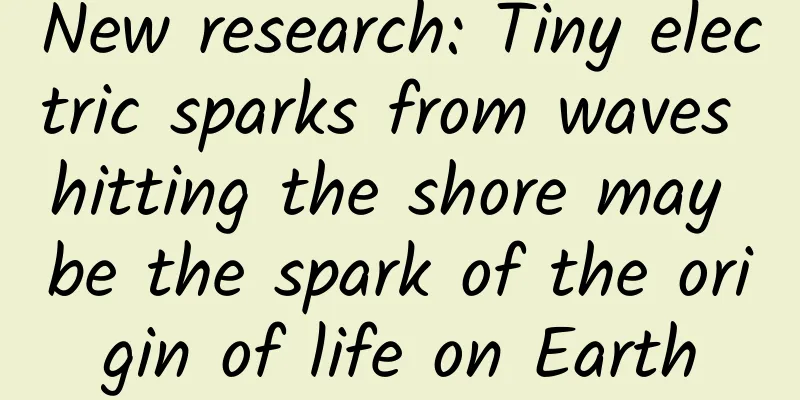The top ten evolutionary "weirdos" in nature, each one more outrageous than the other (Part 1)

|
Ailsa Harvey In the vast history of biological evolution, there are many creatures that have become the best in nature with their unique and strange evolutionary paths. These creatures not only make us marvel at the diversity of life, but also give us a deeper understanding of evolution. Now, let us explore the top ten evolutionary weirdos in the history of animal evolution. Invisible Frog There are about 150 species of glass frogs worldwide. The Secret of the Invisible Frog In the biological world, the internal organs, as the core of life, are undoubtedly one of the most fragile parts of the body that need to be carefully protected. For this purpose, nature has cleverly given animals multiple layers of protection such as skin, tissues and bones, making the internal organs hidden deep inside and difficult to be seen by the outside world. However, there is a kind of frog that breaks this convention - the glass frog, whose body seems to be cast with the magic of invisibility. From above, glass frogs look like any other frog, with their typical green color and similar body shape, hardly attracting much attention. But when you change your perspective and observe from below, a surprising phenomenon occurs: the glass frog's body seems to blend into its surroundings, becoming hard to detect. This is because the glass frog has an extremely thin, translucent skin, through which you can clearly see the internal structures of its body - a fast-beating heart, some bright red blood vessels, and moving intestines. Although these internal organs are exposed, the glass frog has a unique camouflage ability, making it difficult for predators to catch them. This translucent skin feature is not possessed by all glass frogs. Some species of glass frogs have this translucent skin all over their bodies, while most species only have this translucent skin on their abdomens. So, what advantages does this translucent abdomen have for glass frogs? This has to start with their habitat. Glass frogs mainly live in the tropical rainforests of Central and South America, where vegetation is dense and green. They spend most of their time on leaves, using their bright green appearance to blend in with the surrounding environment and form a perfect camouflage. When they sit high on the leaves and the sun shines down from above, their translucent abdomen plays a key role. Due to the penetration of light, the outline of the glass frog becomes blurred when observed from below, greatly reducing the risk of being discovered by predators. This unique camouflage technique allows glass frogs to survive safely in the tropical rainforests full of dangers. Fig Wasp and Figs Some fig wasps have developed long ovipositors that allow them to lay their eggs without entering the fig. On the stage of nature, figs and fig wasps perform a wonderful dance of symbiosis. The mutual dependence and sacrifice between these two creatures is not only amazing, but also demonstrates the tenacity and greatness of nature's vitality. In order to reproduce, fig wasps have developed a unique survival strategy. Some female wasps grow long ovipositors so that they can lay eggs on the outside of the fig without venturing into the fruit. However, more female wasps choose another path: they carry pollen all over their bodies, instinctively look for new fig trees, and then resolutely drill into the soft and sweet figs. The female bees pay a huge price in this process. Their wings are broken in the struggle, and most of their antennae and legs are damaged. However, all this is for the purpose of reproducing offspring - laying precious eggs and inadvertently pollinating figs. Shortly after completing these egg-laying missions, the female bees die quietly, selflessly dedicating their lives to their unborn offspring. The fate of the male bees is also touching. As the figs gradually mature, the male fig wasps will hatch first. They are responsible for mating with the female bees, and after completing this mission, they dig a passage for the female bees to fly out of the figs. However, after completing this mission, the male bees also come to the end of their lives. The female bees, with the hope of a new life, fly to the new figs through the passage opened by the male bees with their lives. They may fly as far as 10 kilometers or even 160 kilometers just to find a new home and continue the legend of the symbiosis between the fig wasps and the figs. In this dance of life, the fig wasp has used its life to interpret its persistence and dedication to the survival of the species. Thanks to their efforts, the figs have been able to reproduce successfully, and the two have jointly composed a hymn to nature. Dung Beetle Stargazer A dung beetle can roll feces that is 1,141 times its own body weight. In the insect world, there is a unique creature - the dung beetle, which can even roll feces weighing 1,141 times its own body weight. For humans, feces may be just waste, but for dung beetles, it is an indispensable treasure, both food and nesting material. For this treasure, dung beetles will travel long distances to roll feces into balls and transport them back. However, how to ensure the safe transportation of this treasure in a complex terrestrial environment? Dung beetles have an amazing skill - stargazing. At night, they look up at the sky and use the bright band of the Milky Way as a natural compass to ensure that they move in a straight line. Although their eyesight cannot see every star clearly, the bright band of the Milky Way points them in the direction, allowing them to safely transport their fecal treasures in the dark. The pictures in this article are from How it works magazine |
>>: Who is it? Making countless atoms sing in unison (Part 1)
Recommend
A complete guide to operating and promoting Tik Tok!
Do you know how to use Tik Tok, which has huge tr...
How can APP accurately discover users’ real needs?
Regarding user needs, there is a very famous case...
What will happen to robots after Andy Rubin leaves Google?
[[122098]] "The future is looking very brigh...
The flood season has arrived! There may be a "big pit" under the calm water surface. What should you do if you accidentally drown?
Recently, a couple in Yuncheng City, Shanxi Provi...
26 letters review Apple's year: from Admire to Zenith
The New Year bell of 2016 is about to ring, and i...
Top 5 marketing trends in the fourth quarter of 2021!
Where do new brands attract new users? What actio...
Profit as soon as you buy it: iPhone 13 depreciates 50% lower than iPhone 12
According to the latest report from SellCell (Int...
2020 Accounting Job Crash Course
Pre-class guidance video The first part is the re...
Tesla still stubbornly insists on the visual route. Will LiDAR have the last laugh?
Recently, Musk showed off his strength at Tesla&#...
How to develop a financial accounting mini program and a financial diary mini program?
With the economic downturn, many people have begu...
Weaving, rapping, tilling the land...the "workers" in the cultural relics are also admirable!
Diligence is a traditional virtue of the Chinese ...
The era of extensive growth is over, and high-precision maps tighten the gray area
Twenty years ago, people basically relied on acti...
A practical course on color business that goes beyond teaching matching
A practical course on color business that teaches ...
Every bite you eat is responsible for your brain
After the various fatty acids in food enter the h...









